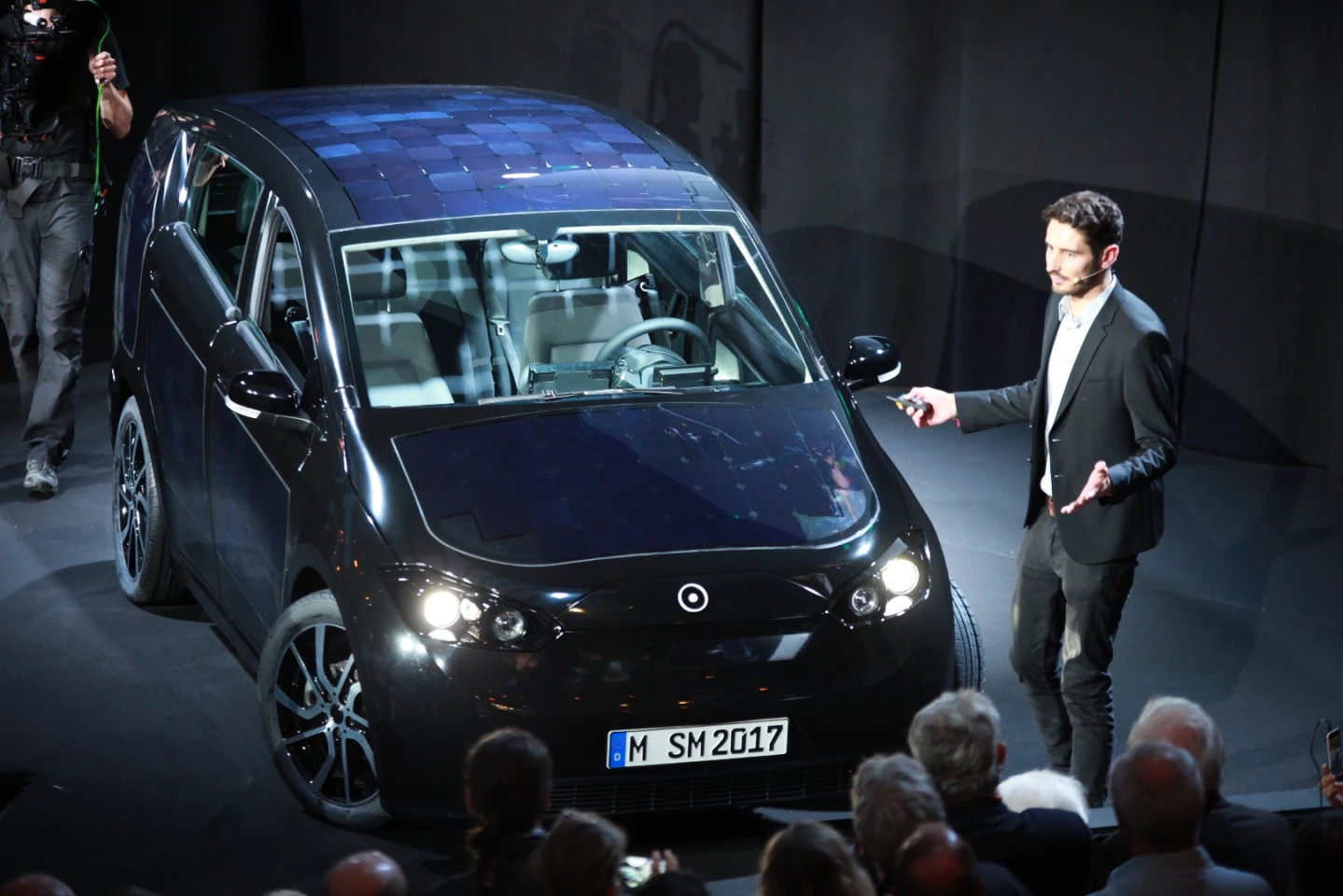Last year, German startup Sono Motors embarked on a successful Indiegogo crowdfunding effort to get its electric family commuter into production. The Sion design included 7.5 square meters of photovoltaic panels integrated into the outer skin to charge the batteries while the electric car sat around waiting for someone to drive it. The final pre-production design was revealed in April, and the Sion went up for pre-order a few hours ago.
The Sion has 330 mono crystalline PV cells from SunPower (3.65 W each) on the hood, doors, rear and transparent roof to help top up the Li-ion batteries while the vehicle is on the move, or sat in an open air car park or driveway. Harvesting the sun's rays won't be enough to power the car on solar power alone, but the company does claim that the Sion's PV system could manage around 30 km (20 mi) per day in "favorable conditions."
Back in September, Sono did say that the system could peak at 65 km of solar-only range, but real world stats will likely vary considerably with everything from extended cloud cover to other road users casting a shadow on the panels affecting performance. But every little helps, right? Like other battery electrics, the remainder of the car's juicing needs will have to be met by plugging in. The Sion's overall range is given as 250 km (155 mi) per charge.
The five door family car's 80 kW three-phase asynchronous electric motor with single speed transmission is said to be good for a top speed of 140 km/h (87 mph), which should be enough to satisfy the needs of most city dwellers and suburbanites.

An interesting focal point of an otherwise simple interior is the air filtration system which makes use of moss to help remove dust from air in the cabin. Sono says that owners needn't worry about having to tend the moss, confirming that it's pretty much maintenance-free and should last for years before needing to be swapped out.
Other features include an infotainment system controlled by a 10-inch touchscreen, anti-lock brakes, passenger and driver airbags, regen braking and bidirectional charging technology. The latter allows for portable devices to run off of the Sion's battery, with the company saying that charge can even be shared with other electric vehicles should the need arise. An optional trailer hitch is reported capable of towing loads up to 750 kg (1,650 lb).
Sion owners will have the option to rent the battery after parting with €16,000 (US$18,700), or buy the whole car and battery pack package. Sono now needs 5,000 pre-order commitments to go into volume production and, if all goes well, manufacture will begin next year with the first deliveries starting in 2019.
Update July 29: Sono Motors has informed us that those who wish to buy the battery, rather than rent it, can do so for a one-off payment of "less than €4,000" plus the cost of the Sion. The battery rental cost will be determined closer to launch.
Source: Sono Motors















